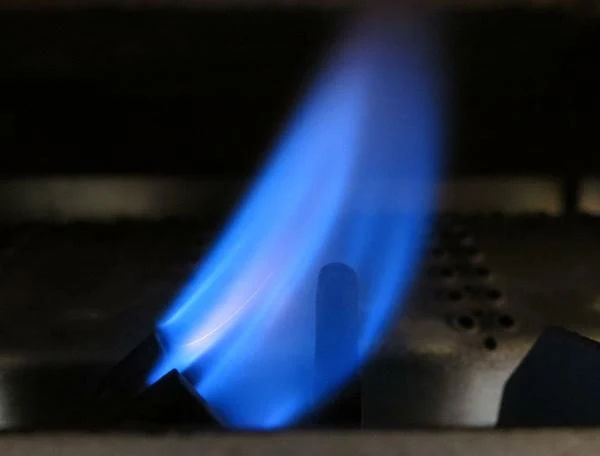Ad Code
Translate
List of 6,000+ Dofollow Commentluv Blogs FREE (Updated 2025)
January 16, 2025
What is Ozempic (semaglutide)? (Updated in 2025)
January 30, 2025
How To Find Suitable Properties In Cyprus? (Updated in 2025)
January 11, 2025
Smart strategies for trading on crypto exchanges
February 18, 2025
How To Fix a Gas Furnace That Will Not Light?
Zizo Gala-Mkhize
June 22, 2022
If you're like most homeowners, you probably don't think about your furnace until it stops working. And even then, you might not know what to do about it. Furnaces are complex machines, and there are a few things that can go wrong. One common problem is a furnace that will not light. First, check to make sure there is gas coming to the furnace. If there is no gas, you'll need to contact your gas company.
If your gas furnace won't light and there isn't a problem with the gas, there are a few other things that you check. If you aren't comfortable inspecting your furnace, a qualified HVAC technician can help assess the issue and offer solutions for the problem. Let's take a look at some things that you can do to try and fix a problem with a furnace that won't light.
Check the pilot light.
When your furnace will not light, the first thing you should do is check the pilot light. If it is out, you might be able to relight it.
First, turn off the gas to the furnace by turning the knob on the valve from "on" to "off." Wait for a few minutes for any gas that may be in the system to dissipate. Then open up the blower door and locate the pilot light assembly.
The pilot light assembly should have a small flame burning inside of it. Use a long-handled lighter or match to ignite the flame. Once it is lit, wait a minute or two for it to get hot enough so that it will stay lit when you release the flame. If it goes out after you release the flame, repeat these steps until it stays lit. Once it is lit, close up the blower door and turn on the gas by turning the knob on the valve back to "on." If you can't get the pilot light to stay burning, you may have other issues that need to be addressed.
Check the thermocouple.
A furnace thermocouple is a device that is used to measure the temperature of a furnace. It consists of two metal wires that are joined together at one end. The other end of the wires is attached to a thermometer. When the furnace is turned on, the thermocouple will generate a current that will be proportional to the temperature of the furnace. The thermocouple is a safety device that prevents the furnace from working if a problem is detected.
In some cases, the thermocouple can go bad and prevent the furnace from working. If your furnace is not working, there is a good chance that the problem is with the thermocouple. The thermocouple is located in the furnace's gas valve. If the thermocouple is not working properly, the furnace will not start, and your pilot light will have difficulty staying lit. A qualified HVAC professional can help replace a bad thermocouple.
Inspect the heat exchanger.
The heat exchanger is a key component of the gas furnace that helps it to function properly. It is responsible for transferring heat from the burning gas to the air that is circulated throughout the home. If this component becomes damaged, it can cause the furnace to stop working. In some cases, it may be possible to repair the heat exchanger, but in other cases, it may need to be replaced. This is an important task as a cracked heat exchanger can allow dangerous carbon monoxide gas to escape into the home. Additionally, a faulty exchanger could create a fire hazard.
Reset the combustion control board.
The combustion control board is a computerized component in the furnace that monitors and adjusts many of the furnace's functions, such as ignition and flame sensing. If this board is not working properly, the furnace may not light or may not be able to maintain a steady flame. In order to reset the combustion control board, you will need to first locate it. The board is typically located near the blower motor or on the side of the cabinet. Once you have found it, unplug it from the power supply and wait at least five minutes before plugging it back in. If this does not fix your problem, you may need to replace the combustion control board. A qualified HVAC technician can help diagnose and resolve problems with the combustion control board.
Gas furnaces can be a great way to heat your home, but when they stop working, it can be a major inconvenience. If your gas furnace isn't lighting, there are a few things you can do to try to fix it. From checking the pilot light to inspecting the heat exchanger, there are a few areas you can focus on. Overall, it is important to fix a gas furnace that will not light because it can pose a fire hazard and result in expensive repairs.
Featured Post
12 Prominent new technologies and trends emerging in 2025
Khabza Mkhize-
April 02, 2025
Soapie Teasers
Sister Sites
Most Popular
List of 6,000+ Dofollow Commentluv Blogs FREE (Updated 2025)
January 16, 2025
Smart strategies for trading on crypto exchanges
February 18, 2025
Popular posts
List of 6,000+ Dofollow Commentluv Blogs FREE (Updated 2025)
January 16, 2025
Smart strategies for trading on crypto exchanges
February 18, 2025
Footer Menu Widget
Created By Blogspot Theme | Distributed By Gooyaabi Templates



0 Comments